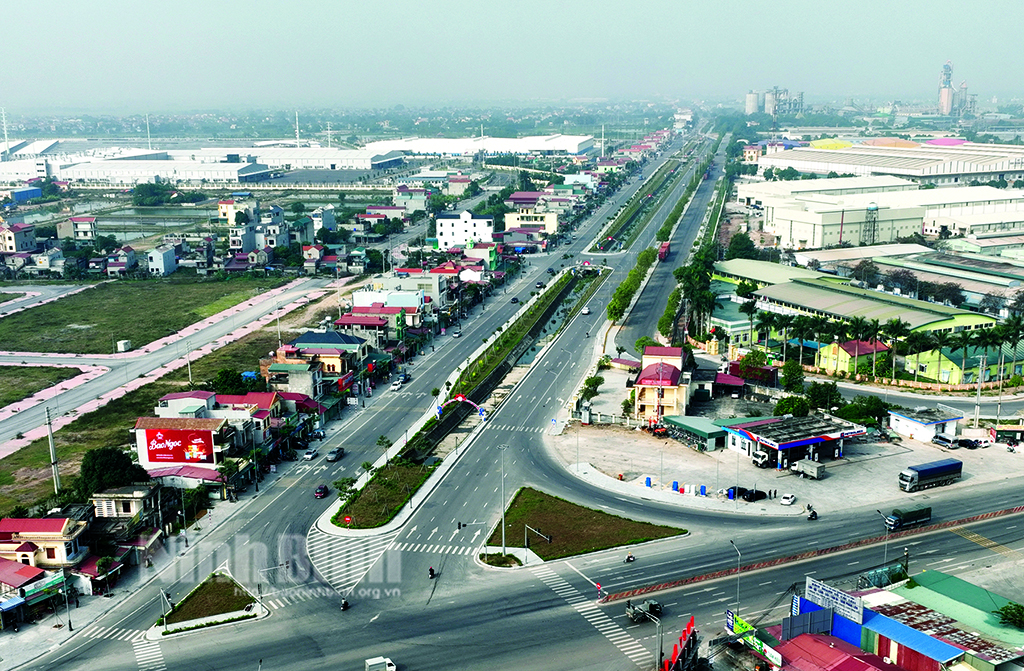Ninh Binh determined to build modern and synchronic transport infrastructure for rapid and sustainable development

Accordingly, Ninh Binh has paid due attention to investing into key transport projects, creating momentum for investment attraction, spurring socio-economic development and turning itself into a developed province in the Red River Delta.
Located in the southern part of the Red River Delta, Ninh Binh is seen as a gateway to enter the central and southern region of the country. However, infrastructure in some remoted areas of Ninh Binh has quite poor, therefore, it has defined the priority task of developing modern and synchronic transport infrastructure.
From the beginning of the 2020-2025 tenure, the provincial Party Committee issued Resolution No.10/NQ-TU dated December 14, 2021 on building synchronic infrastructure, and modern and civilised urban areas in the period of 2021-2025 with a vision to 2030.
The resolution has set the goal of investing key transport system for regional development, urban space expansion and creating momentum for socio-economic development.
Basing on this foundation, administrations at all levels and sectors have focused on expediting important projects. These projects have been carried out effectively, ensuring the quality and the speed of construction as scheduled.
In addition, the province has coordinated with central ministries, sectors and investors to carry out expressway projects running through Ninh Binh province, helping to accelerate their progress, namely the eastern North-South expressway's Cao Bo-Mai Son section and Mai Son - National Highway 45 section.
These are arterial roads of the whole country. They help links inter-regional connectivity synchronically and create an axis for linking national economic hubs with the province's tourist destinations such as Trang An, Cuc Phuong and Kim Son coastal district.
The efforts have played an important role in spurring the province's socio-economic development in the short and long terms, easing traffic flows and create conditions for potential exploitation in remoted areas.
In 2023, Ninh Binh has allocated capital for key projects or those with the highest capacity of completion.
At the same time, it has sped up construction of projects, minimised time for performance and investment procedures, focused on construction in a bid to disburse 100% of the assigned public investment capital.
Also in this period, the province is conducting surveys and carrying out procedures related to the investment in some key roads such as the East-West road (second phase); Hai Phong - Ninh Binh expressway's section running through Ninh Binh, putting forth a proposal on connecting the East-West road to Ho Chi Minh road in a bid to create inter-regional connectivity between Ninh Binh and Northwestern provinces.

Currently, all procedures related to survey, design, bidding, site clearance of the East-West road (first phase) have been completed within four months. To date, the site clearance has been sped up with 20.2 out of 22.9 kilometers of land have been cleared.
Once completed, the road will run through four cities and districts, connecting the mountainous district of Nho Quan in the West to the coastal district of Kim Son in the East, and opening up the development space for 50,000 hectares in the southern part of Ninh Binh province.
In particularly, it will link with important national roads, namely the eastern North-South expressway, National Highway 1A and coastal road. It will also link with Ho Chi Minh road and create inter-regional connectivity between the Red River Delta and the Northwestern region.
With the leadership, direction and resolve of the Party, National Assembly, and Government, as well as the close coordination among central ministries and sectors, Ninh Binh has exerted efforts to fulfill tasks of developing modern and synchronic transport infrastructure, thereby establishing a more effective and professional transport structure.
Translated by Nguyen Thuy


